By Dan Weisz
I volunteer with Raptor Free Flight at the Desert Museum. This season’s demos have begun and I was able to take a few photos.
The Barn Owl is part of the afternoon demo. Its white face contrasts with the rich cinnamon colors of its back feathers. It has a very short tail but long wings.
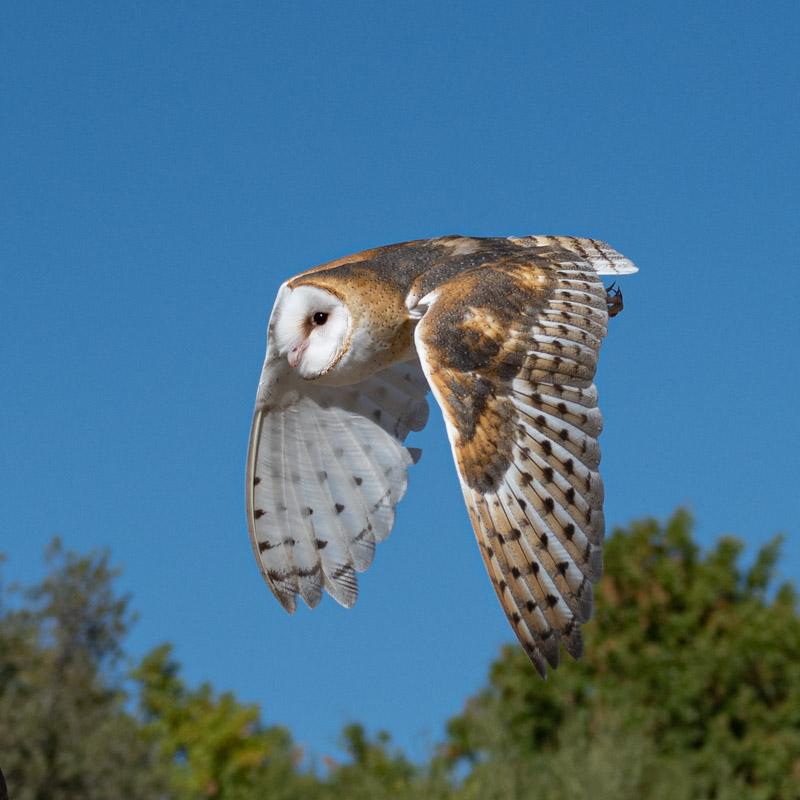
The Barn Owl practically floats through the air with a very silent flight
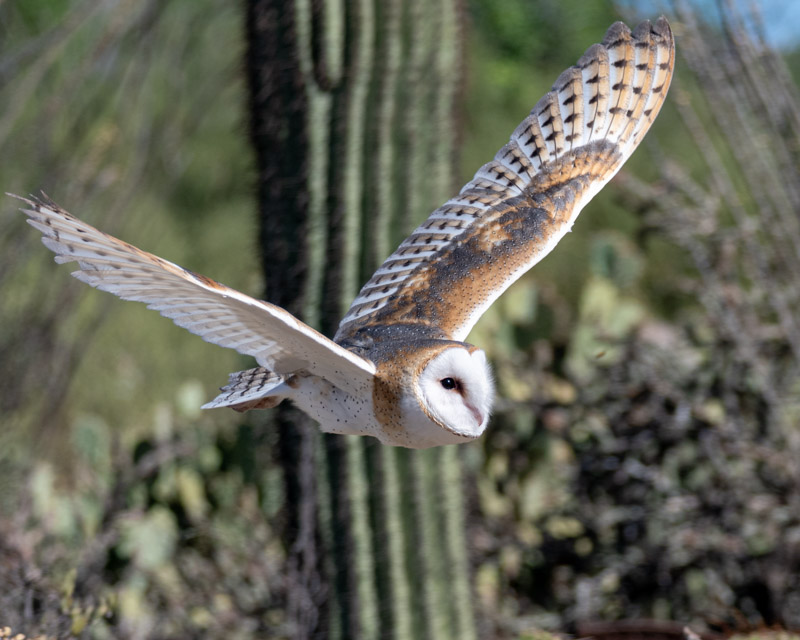
The Crested Caracara is part of the morning demo. This young bird is just over two years old. This season, he has begun his routine with several looping flights around the Desert Museum before coming in to the demo area for closer “perch” calls.
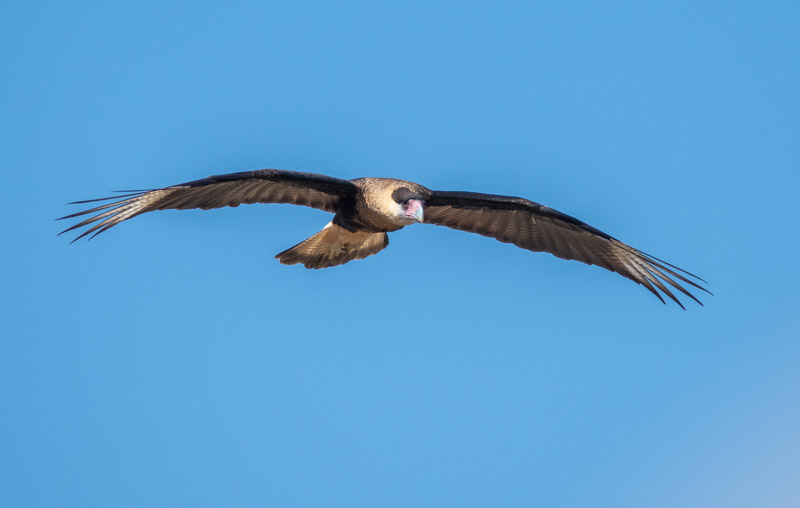
In flight, these birds are dark with white at each of their four ‘corners’- wingtips, neck, and tail. Crested Caracaras are part of the falcon family and while they are very strong fliers, they do not use speed to capture their prey. They will fly to their prey and then run after it on the ground. Crested Caracaras also are big consumers of carrion.
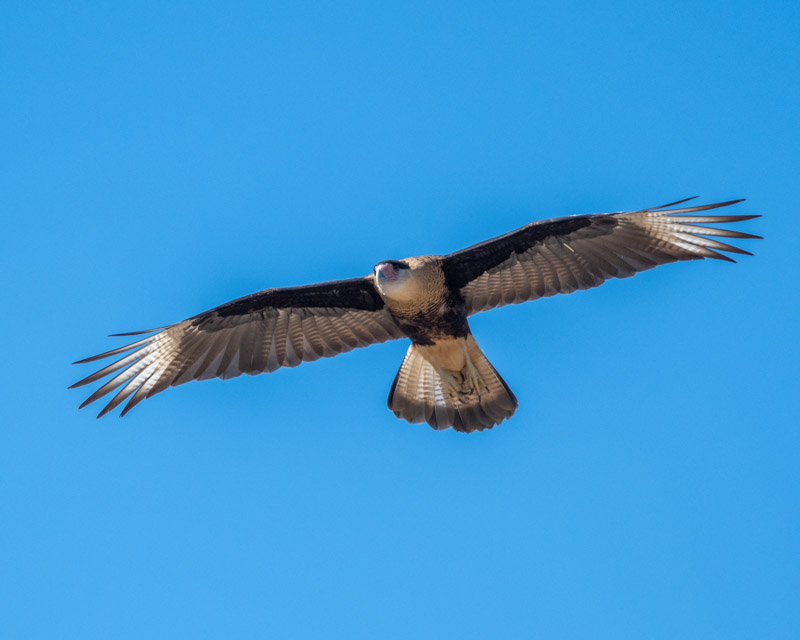
The Gray Fox on exhibit at the Museum was napping when I saw it. Gray Foxes are common around the edges of the Tucson area. https://www.desertmuseum.org/kids/oz/long-fact-sheets/Gray%20Fox.php
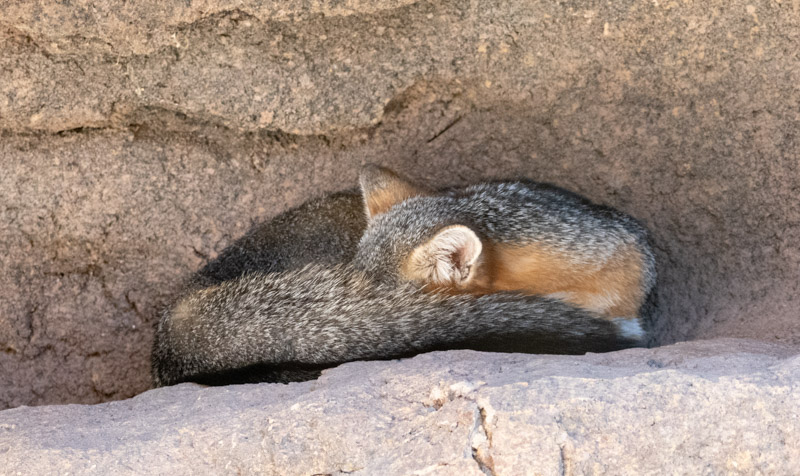
Dragonflies are very skilled predators and are estimated to be able to catch insects on over 90% of their hunts. Unfortunately, this Common Green Darner was looking the other way when it became prey, not predator. I watched the Roadrunner hop straight up and snatch this dragonfly off of a branch three feet above the ground.
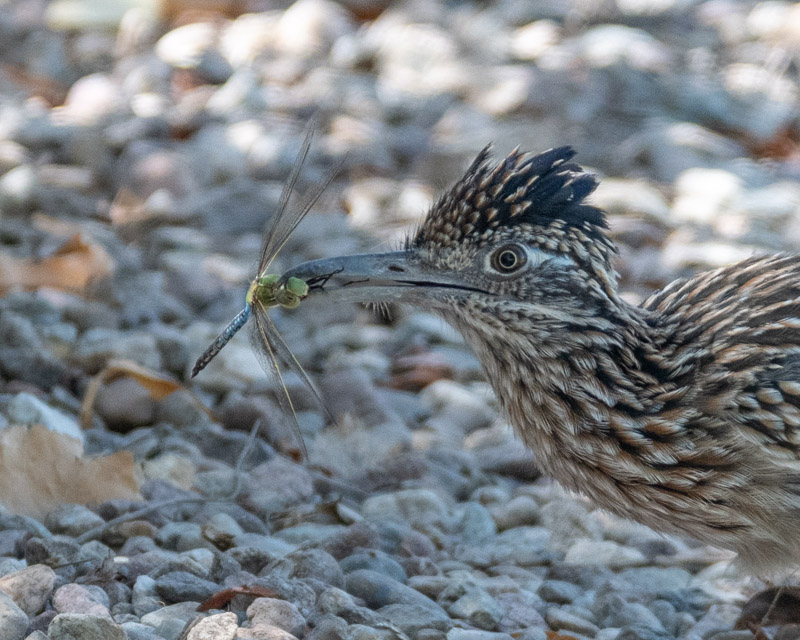
For a while, the Common Green Darner seemed to be trying to pry the Roadrunner’s beak open, to no avail.
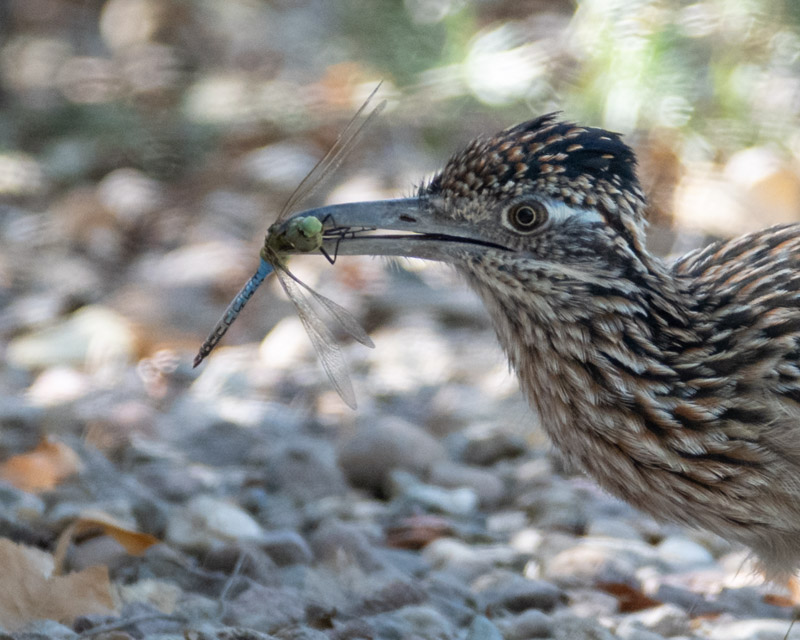
And lunch happens!
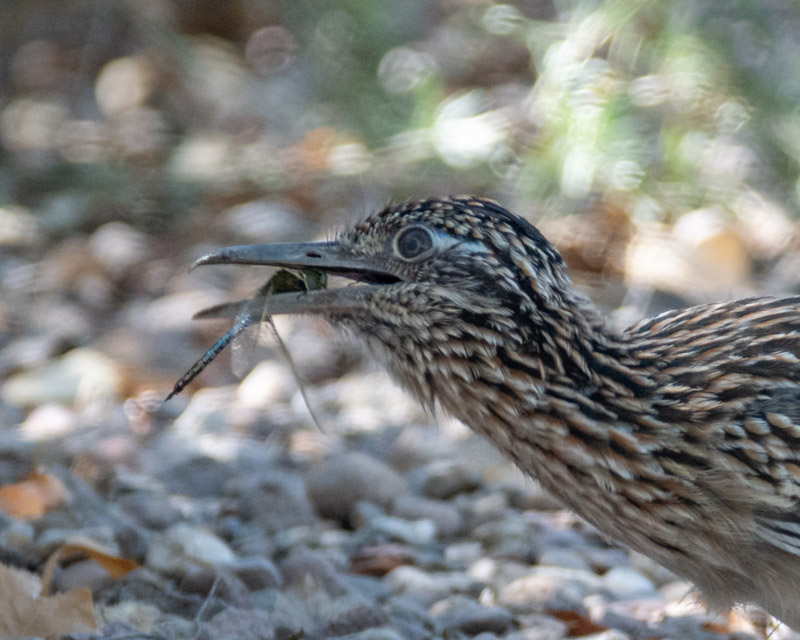
And at Sweetwater Wetlands, I’ve came across one of the bobcats hunting.
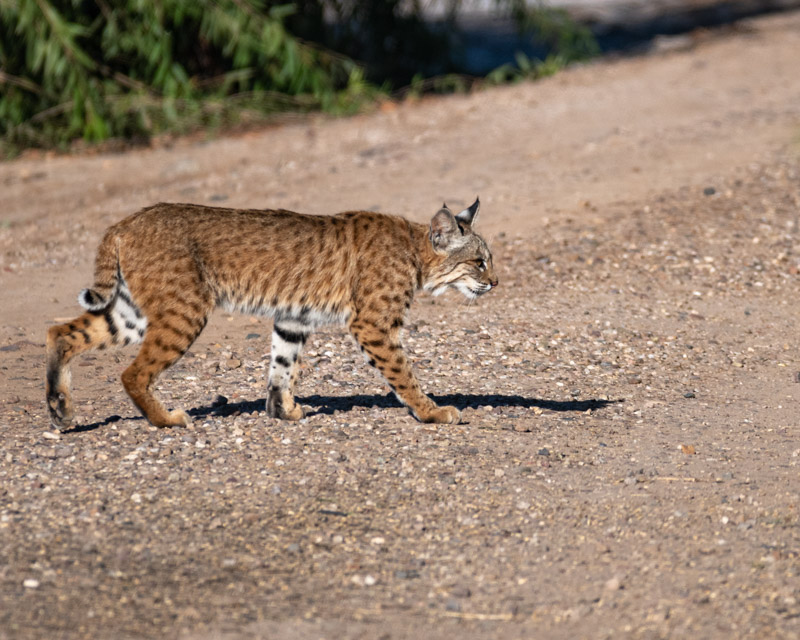
While crossing the path, she turned to check me out. Because her nose is all pink, I know this is not the mother bobcat but one of her young. The mother bobcats has mottled black spots on the pink flesh of her nose.
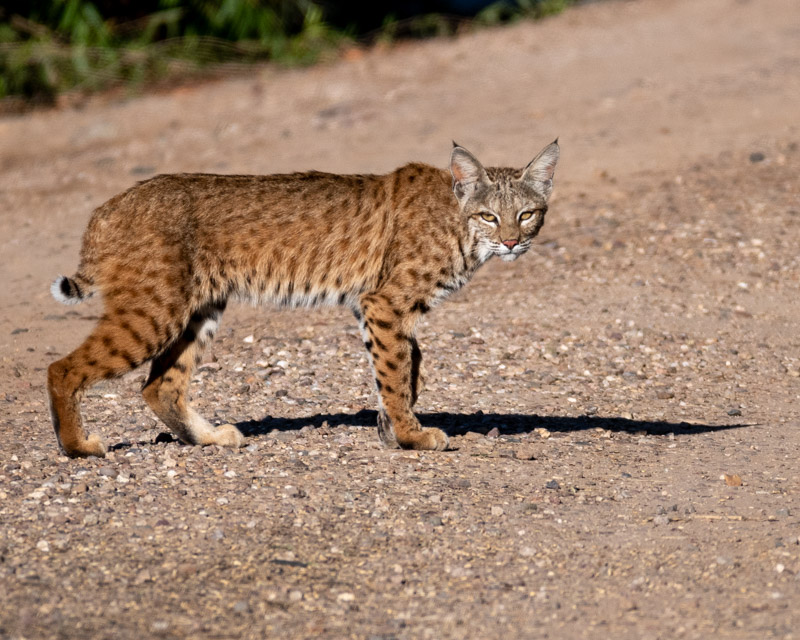
The bobcat continued across the path.
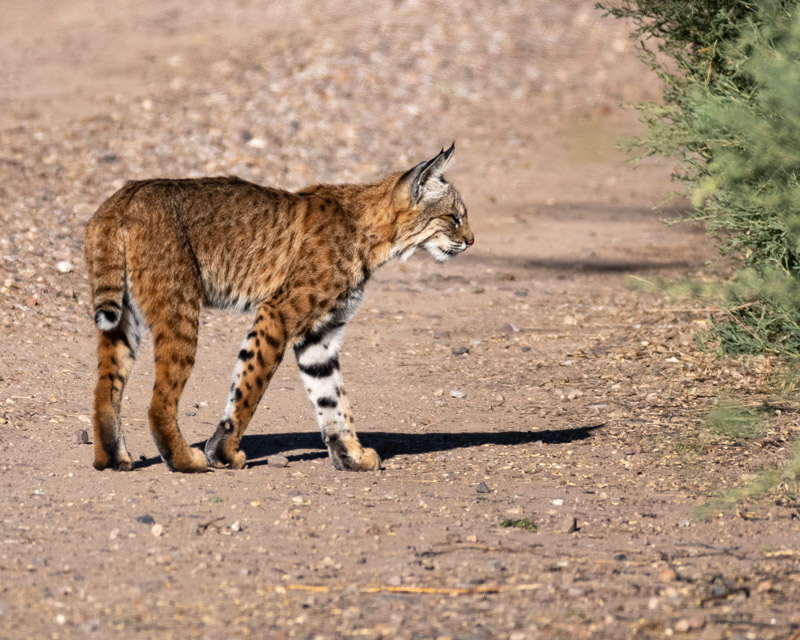
It took one last glance at me before disappearing into the brush.
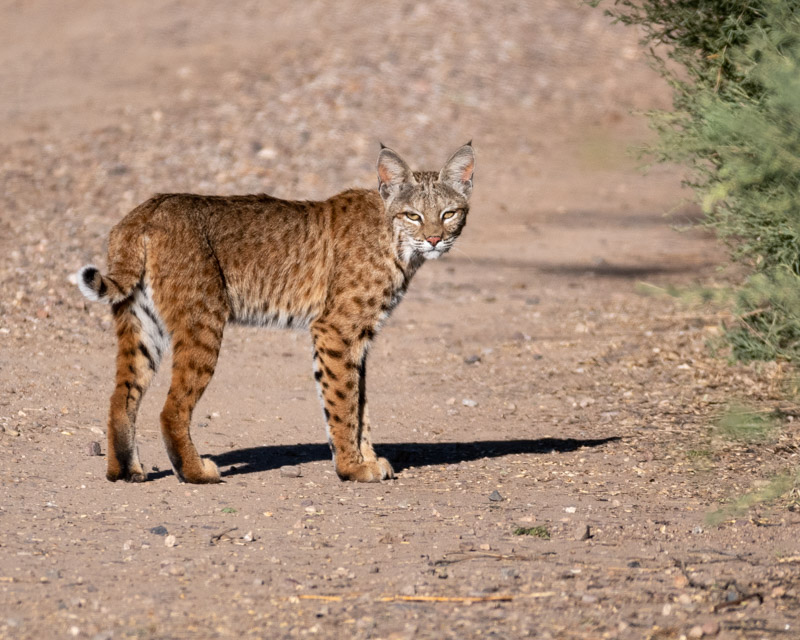
More bobcat photos to follow from the next few days.
